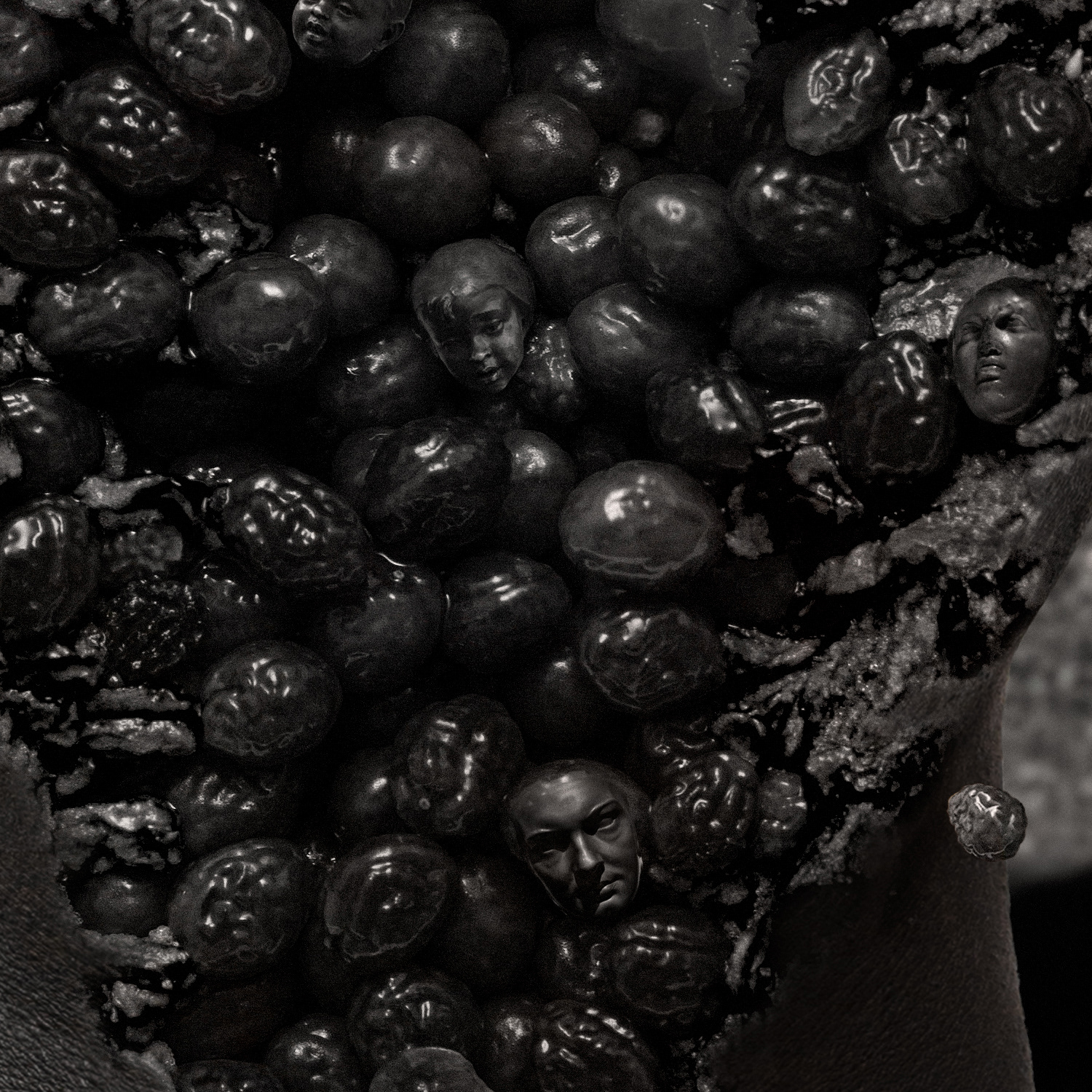(prints 86x82 cm, 56x53 cm)
Our life is a number of successive events. We give each event our own subjective assessment, which generates a certain emotion in the body, followed by a reaction. We are not aware of either the assessment of the event or the emotion that arises in response. Our consciousness works much more slowly, registering the result of unconscious calculations - the reaction. At the same time, we firmly believe that this reaction is our conscious choice. We are convinced that only our assessment of the situation is correct, and our actions are adequate. Our mind makes a decision in a split of a second based on millions of scattered facts, and we can only realize its choice and convince ourselves that we did the right thing. (google Benjamin Libet experiment)
The same event can have a different assessment depending on the state of the mind at a given moment. Our thoughts, which are secondary to feelings, are guided by the limbic system of the brain and easily take on the tint of a background emotion. Oriental religions and philosophy schools have been studying this for thousands of years. Western scientists are also interested in this issue. Dr. David Hawkins has used Applied Kinesiology techniques for 20 years to create his Map of Consciousness. He used a manual muscle test on thousands of volunteers to determine basic states, their conditional numerical values of energy levels and their impact on others.


The result of his research can be represented as a line graph in the range of values from 0 to 1000:
Death (0) - Shame (20) - Guilt (30) - Apathy (50) - Grief (75) - Fear (100) - Desire (125) - Anger (150) - Pride (175) - Courage ( 200) - Neutrality (250) - Willingness (310) - Acceptance (350) - Reason (400) - Love (500) - Joy (540) - Peace (600) - Enlightenment (700-1000)
Below I will briefly outline their characteristics.
Shame (1-20)
Serial killers and people who have experienced the loss of honor, reputation or trust of a significant person. This state is characterized by isolation, loneliness, shyness, perfectionism, severity, intolerance and fanaticism. They are often victims of abuse, who themselves become violent towards others. The tendency to accidents and suicidal behavior, the desire to become "invisible" is manifested here.
Guilt (30)
Often it manifests itself as concern about one's "sinfulness", obsession with the inability to do something, lack of emotions, blaming.

